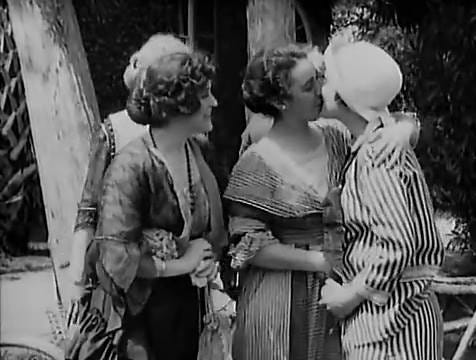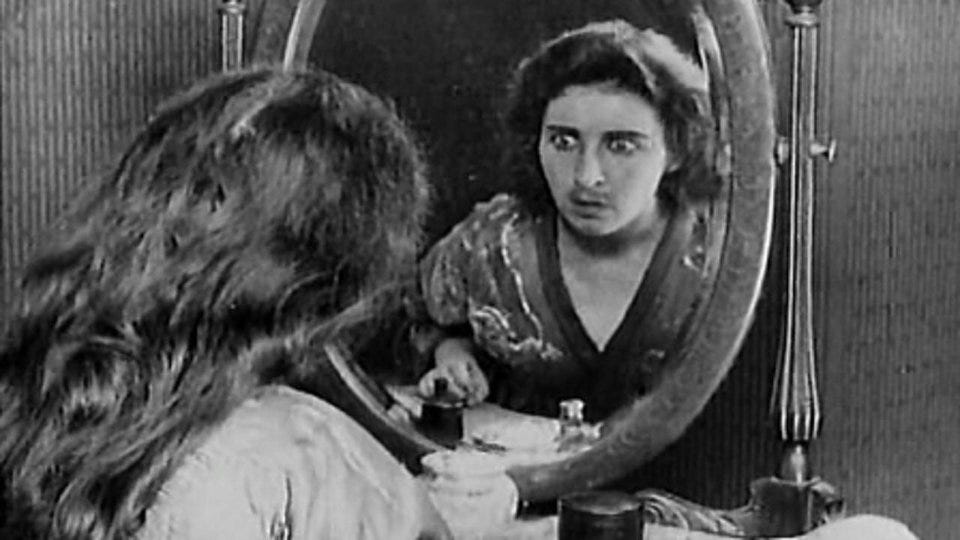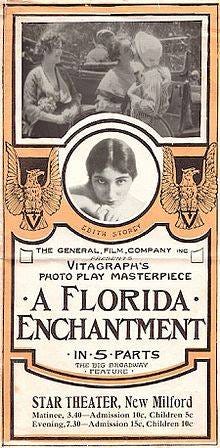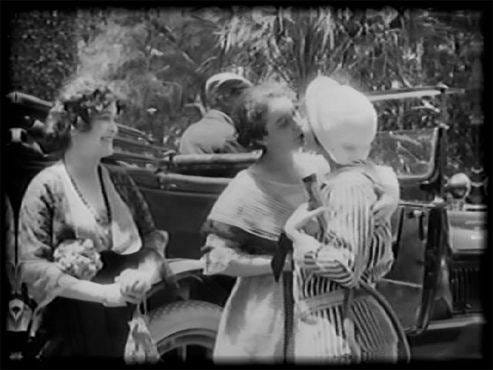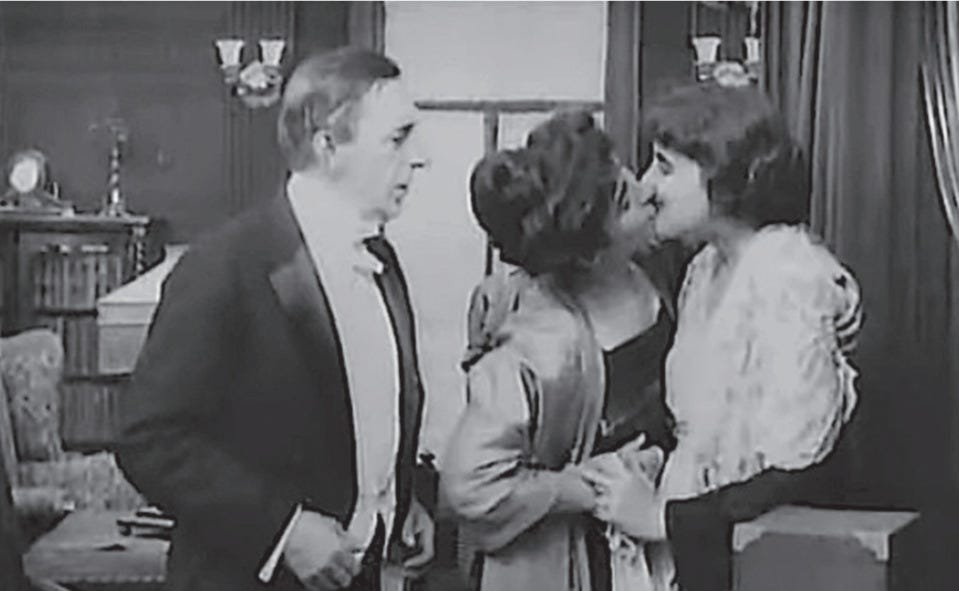The first lesbian movie- A FLORIDA ENCHANTMENT (1914!). Wait. What?
A woman (Edith Storey) who discovers some enchanted seeds that have the effect of turning women into men, and vice versa.
Notable for its bold subversion of sexual stereotypes, the humor is marked by director Sidney Drew's clever sophistication and understated style. Drew and company have fun with the premise, and make the most of the farcical situations involving gender confusion and role reversals, which frequently retain their ability to be fresh and surprising (and which seem to have provided a model for later cross-dressing comedies such as Lubitsch's I DON'T WANT TO BE A MAN). The film also boasts some effective photography and a nice use of the Florida locations. With its attention to character and situations, it provides an interesting contrast to the roughhouse, knockabout slapstick most frequently associated with silent comedy, and is a fine example of Sidney Drew's talent as both a comic actor and filmmaker in a career that spanned more than 150 films over the course of a decade. -
Wath A FLORIDA ENCHANTMENT click here!
The film is based on the 1891 novel and 1896 play (now lost) of the same name written by Fergus Redmond and Archibald Clavering Gunter.[The film, produced by Vitagraph Films, was shot in 1914 on location in three Florida locations: Jacksonville,. St. Augustine, and St. Petersburg.The film includes white actors in blackface, an aspect carefully dissected in Siobhan B. Somerville's book Queering the Color Line: Race and the Invention of Homosexuality in American Culture. Since its inclusion in Vito Russo's 1981 book The Celluloid Closet: Homosexuality in the Movies and its 1995 documentary film adaptation, A Florida Enchantment has been seen as one of the earliest screen representations of homosexuality and cross-dressing in American culture.
The film includes white actors in blackface, an aspect carefully dissected in Siobhan B. Somerville's book Queering the Color Line: Race and the Invention of Homosexuality in American Culture. Since its inclusion in Vito Russo's 1981 book The Celluloid Closet: Homosexuality in the Movies and its 1995 documentary film adaptation, A Florida Enchantment has been seen as one of the earliest screen representations of homosexuality and cross-dressing in American culture.
Click this underlined link for the 1st lesbian movie
At the time of its release, Variety stated that the film should have "never been put out", and the New York Clipper criticized the film and said the female and male impersonations at the story's center were "a most disagreeable theme". When the stage version of the original novel was on Broadway, in 1896, the New York Times described it as "vile stuff" and "nauseating".
In a masters thesis for University of Florida, Joel Christian Adams analyzed the film, arguing it is transformed from the original novel, noting the connection to consumer capitalism at the time, argued it has become an "ur-text within the emergent history of lesbian and gay visibility", and said the transformations of the film's characters come within a "seemingly fixed system of gender and racial assignment." Scholar Janet Staiger said the film is an "extensive treatment" of cross-dressing and gender-switching, arguing it is interesting because it does not only make cross-dressing a performance, but it creates a narrative around gender transformation and creates "narrative tension". Film historian David Kalat added that the film might be the first "feature comedy", criticized the film's racial stereotypes, but noted it is about the "slipperiness of identity".
Historian Julio Capó Jr. also argued that the film introduced viewers to "gender and sexual transgression" which were possible in the cities and resort towns of Florida, including dances reminiscent of those in Chicago and New York City, and stated that "cultural understandings of race" influenced the message communicated by the film. He also distinguished between the vaudeville show of the same name, premiering three years earlier, and the film. Susan Potter, a films studies scholar, stated the film has an affinity for a "novel stylistic transformation" in which a character engages in action to "guarantee legibility", along with creation of new personification and sexual legibility. Others were more critical. Maggie Hennneield, a scholar of early cinema, argued that the film was "bread-and-butter" for the film industry, which she said "often exploited nonnormative bodies" to resolve tensions between commercial appeals of film and its "aspirational artistic ambitions". She also stated the film missed the mark of "codified deviance or sexual subversion" present in previous adaptations of the original novel. - Wikipedia
Watch A FLORIDA ENCHANTMENT by clicking here
Behind the paywall: Hollywood (1980) Episode 8 “Comedy A Serious Business”
Four great comedians of early silent comedy, Harry Langdon, Harold Lloyd, Buster Keaton, and Charlie Chaplin. Among those interviewed are Hal Roach, director Frank Capra, and editor William Hornbeck. Hollywood learned very early how to make people laugh. Comedy was king.
Keep reading with a 7-day free trial
Subscribe to Classics Of The Silent Screen to keep reading this post and get 7 days of free access to the full post archives.




